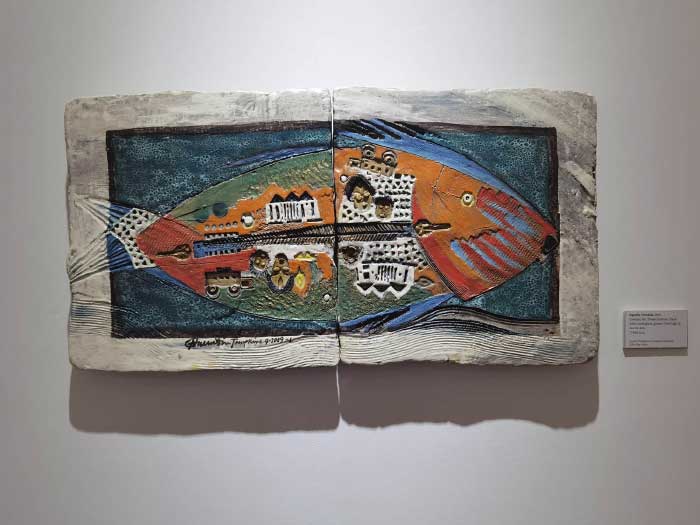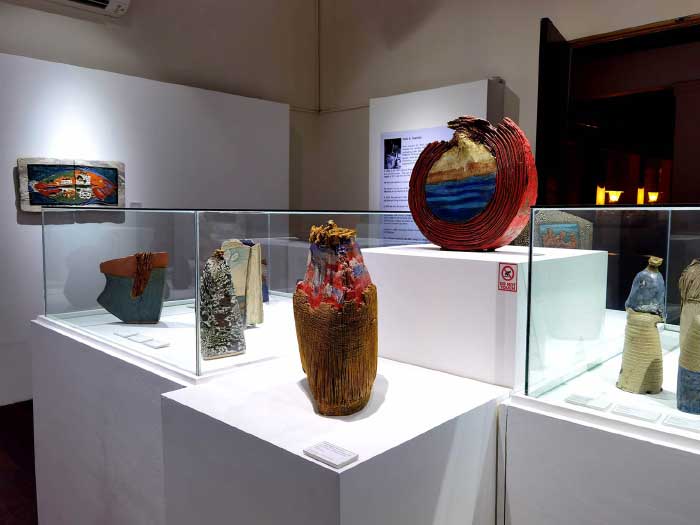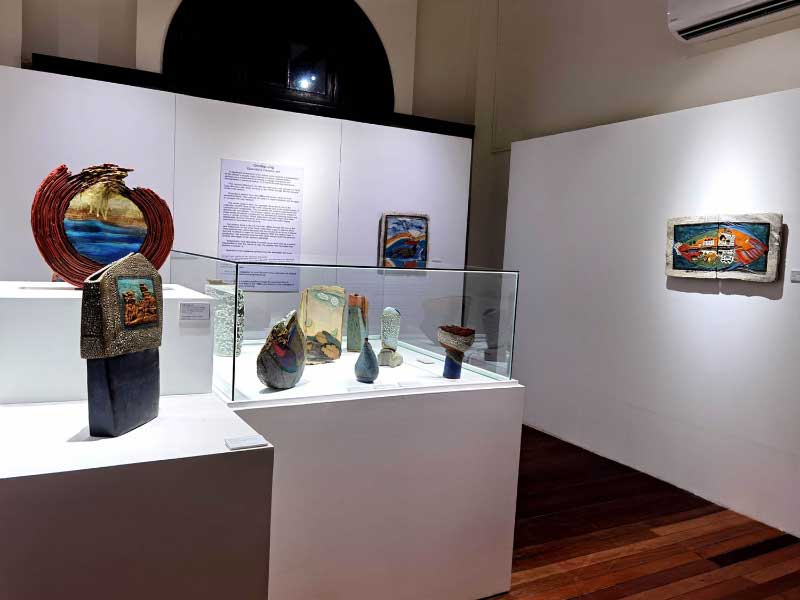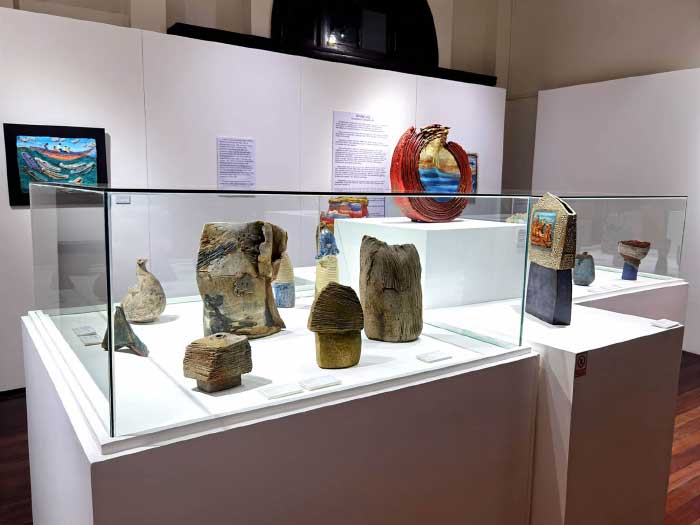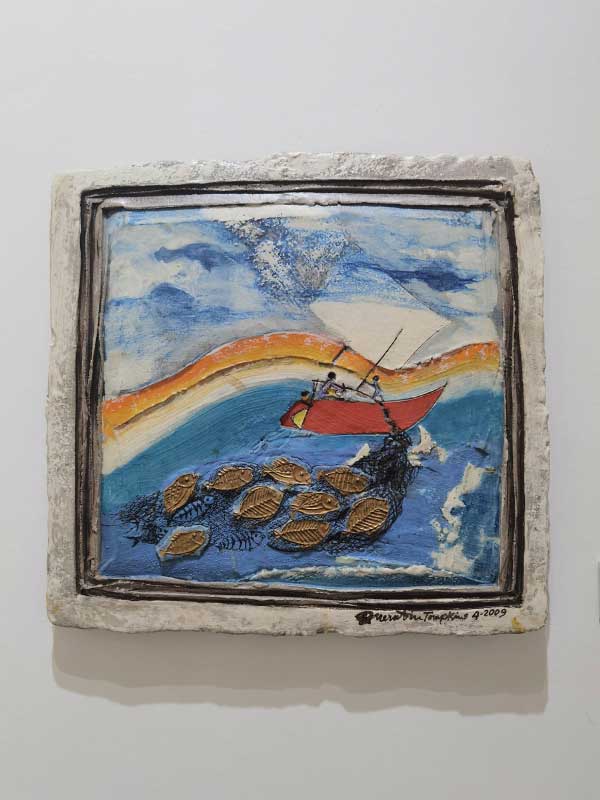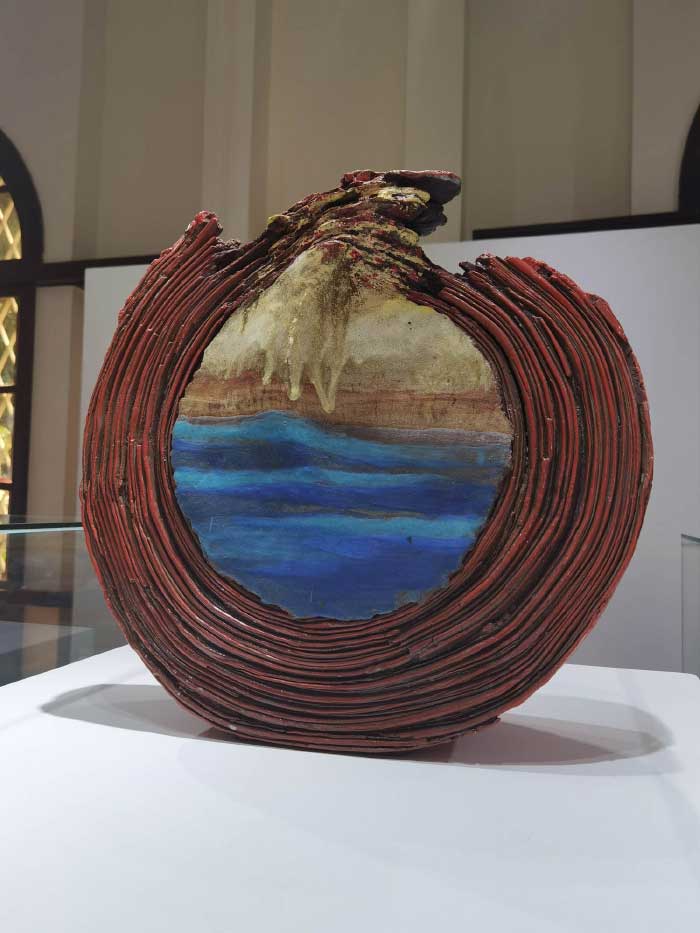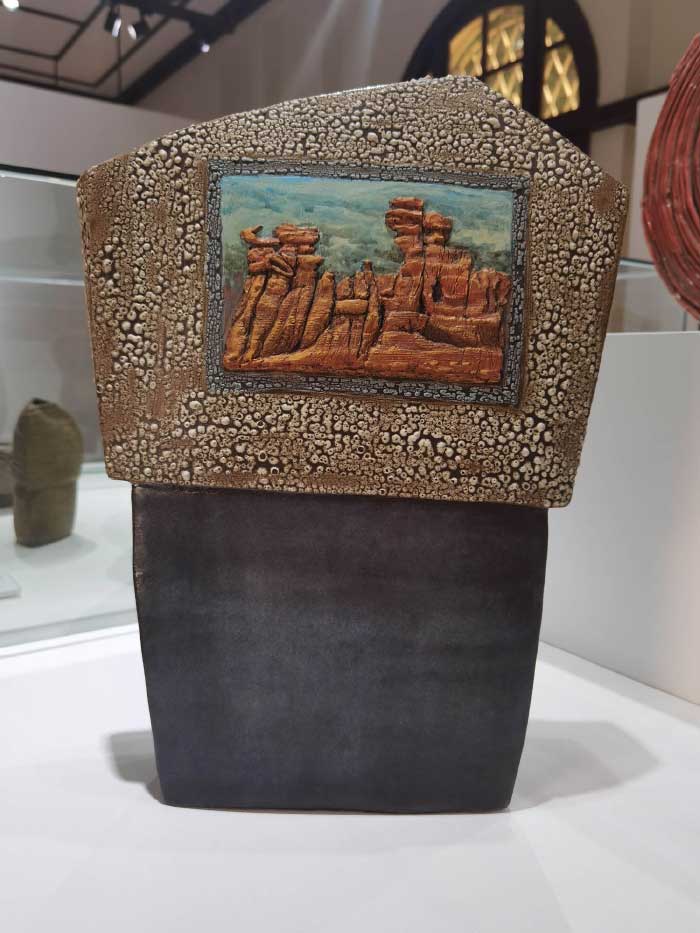By Martin Genodepa
A significant evolvement of an artist’s work could be a manifestation of the person’s equally major internal or psychic transformation – perhaps as a consequence of having a change of localities and atmospheres or personal status, or of some life-altering experience.
This marked difference can also be observed in the ceramics of Nelfa Querubin as a clay artist, working in the 1970s through the first decade of the 21st century.
Querubin’s pottery from the 1980s and earlier came out from wood-fired kilns. They embody her years of experimentation and struggle to conquer the clay medium.
Her works done in Iloilo, for example, those in the collection of UP Visayas, have similar color schemes due to the limited supply of colorants and compounds. This compelled the artist to experiment and develop her own glazes.
The primary organic and geometric shapes in these works produced unexpected but aesthetically pleasing twists and turns in certain portions. Some distortions, though, might have been deliberately done by the artist, and some could have been happy outcomes of accidents during firing.
Her pottery done in the US from the 1990s through the turn of the new millennium, on the other hand, was fired in gas or electric kilns.
Her works during this period, the best examples of which are in the Central Philippine University (CPU) collection, explode with colors because she also had access to an array of glazes that she modified to make her work distinct. With relative ease in production, she explored textures with relish and pursued the gestural strokes she began in her abstract paintings and prints.
Querubin’s early ceramic works in the UPV collection are formal explorations of primarily utilitarian vessels – vases, plates, teapots, bottles, and cups. But she also did some expressionistic sculptures of humans and animals.
Her collection of works in CPU is generally sculptural. Their forms, colors, and textures are inspired by the landscape, vista, and climate of her adopted country. The titles she gave these pieces provide clues to their inspirations – Lake Powel, Deep Thaw, Window.
But while she was inspired by her temperate or desert environment, the artist seemed to have always remembered her life in the Philippines. Her wall-bound ceramics works done in the US hint at her nostalgia for her native littoral milieu.
Low Tide (2000) is a seascape that shows women and children gathering shells when the sea ebbs exposing its gravelly or rocky foreshore that abound with shellfish.
Querubin hails from Concepcion town in Iloilo but decided to set up her pottery studio in Miagao before eventually migrating to America. The town of Concepcion is known for its many beautiful islands and white sand beaches. Both towns are known for their fishing industry.
Invisible Catch (2009) depicts net fishing using a boat which is common in both towns. Equally Divided (2009) captures the practice of dividing among the fishermen their catch for the day. But it seems to also hint at the precarity experienced by fisherfolks.
‘Adaptability’ best describes Querubin as an artist and as a person. Adaptability is also the nature of clay, the medium that Querubin has become a master of.
Querubin’s own resilience springs from her spirituality and from having gone through the ‘fire of life’ – and it is not without indelible progressive changes in her persona. Clay, too, cannot permanently take on the shape it was molded to become, without going through fire.
Gindap-ung in Hiligaynon means to throw into or put on fire. Firing is necessary in order to reveal clay’s latent elements and characteristics that can be surprisingly beautiful.
What a fitting metaphor for how life and human character are shaped to become worthwhile and prepossessing!
Gindap-ung Querubin’s Ceramic Art is currently at the Nelfa A. Querubin Gallery of the Museum of Art and Cultural Heritage, UP Visayas (UPV MACH), Iloilo City campus. This exhibition is made possible through the generous loan of Querubin’s ceramics done in the 1990s and beyond in the collection of the Central Philippine University.
Museum hours are from 8:30 AM through 4:30 PM, Monday through Friday except holidays.
About the Author
Martin Genodepa teaches at UP Visayas. He is also a visual artist and cultural worker. He was one of the volume editors of Pananaw 8 and the editor of Kadagatan Tubtub Kabukidan Traditional Knowledge Systems of Panay and Guimaras. He was instrumental in establishing the Iloilo Museum of Contemporary Art (ILOMOCA) serving as its founding Director from 2017-2018. He founded the UPV Museum of Art and Cultural Heritage (UPV MACH) in 2021 (the old Iloilo City Hall designed by Juan Arellano) using a grant from the Higher Education Development Fund of the Commission on Higher Education (CHED).




















